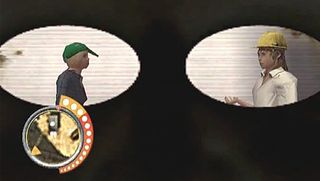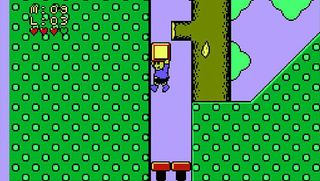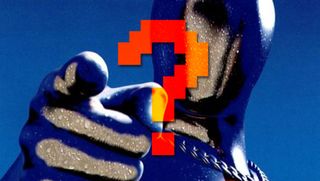Selling with a soul?

In-game advertising, quite rightly, has a stinking reputation. Whether it's Alan Wake conspicuously replacing his torch batteries in extreme close-up, or an entire game based on M&Ms being conspicuously crap, no-one likes their escapist entertainment to poke them in the eye with a real-world brand and then immediately try to hawk it. Avoiding that sort of thing is part of the reason we play games rather than watching TV.
But sometimes, something good slips through the cracks. Sometimes, by accident or by rebellious design, a decent game manages to make it through the corporate marketing machine unscathed. You might still feel dirty for playing them (in fact you almost certainly will), but these things just about transcend their filthy shilling roots and gain sweet, sweet redemption.
Cool Spot

What was it selling? 7-Up. Though you wouldnt necessarily know it in Europe, as Spot didnt become a mascot over here. He just sat on the bottles, in faceless, silent vigil, as we swigged down his fizzy lemon-lime sugar water not even knowing he was there. Must have been Hell. Instead we got Fido Dido, a very 90s line-drawn cartoon character famous for not really doing anything apart from appear on notepads and pencil cases.
Why was it good? Because it was a proper game, by a proper developer. Cool Spot was designed by Dave Perry, working at Virgin Interactive at the time. Although not his best work, it did sow the seeds of the game mechanics and tropes that would become his signature during the 16-bit era. Gorgeous, colourful, expansive levels with loads of explorable verticality, and ultra-smooth, beautifully fluid character animation. Plus, he created the ability to grab ledges and climb up onto them, rather than having to make a perfect jump every time. From Aladdin, to The Lion King, to Earthworm Jim, Perry evolved this stuff into a killer formula.
Sneak King

What was it selling? Burger King food. And the Xbox 360. Released as part of a tie-in deal between the two brands, Sneak King was one of several small, specially commissioned games that were sold in Burger King branches for $3.99 alongside any value meal.
Why was it good? A basic sandbox stealth game, on the surface of it, Sneak King wasn't amazing. It tasked the player with, unsurprisingly, sneaking around in order to catch wandering NPCs unawares. But, rather than delivering a hastily snapped neck upon getting close, the player dropped off Burger King food. The reason that Sneak King was amazing comes down to one simple factor. You were playing as The King, BKs utterly terrifying, silent, masked mascot from the mid-00s, who was probably retired after too many customers woke up in too cold sweats, screaming his name. As such, the game was hilariously creepy, particularly when slipping into first-person mode allowed you to see through The Kings mask holes, while adding a soundtrack of Jason Voorhees-style heavy breathing.
Push Over

What was it selling? Quavers, a brand of fried, reconstituted potato snack with a slight cheese flavour and an overt, pungent, slightly musty cheese aroma. The game partially starred Colin, Quavers early 90s mascot character, who was a zoot-suited dog with a giant chin. He was voiced by Lenny Henry, but in hindsight he looked a bit more like Phil Jupitus.
Why was it good? Pushover was a hybrid platformer and puzzler, with a unique game mechanic. The objective was to rearrange rows of giant dominoes--some of which had special properties such as anti-gravity or the ability to become bridges upon falling--and then knock them over, Domino Rally-style, in order to hit a special trigger domino last and open the level exit. In an era dominated by Tetris clones it was a refreshingly original puzzler, albeit one which tried to stuff a decidedly unrefreshing cheese puff down your throat every chance it got.
M.C. Kids/McDonaldland

What was it selling? McDonalds food. I shouldnt need to explain what that is.
Why was it good? Because it was a legitimately decent platformer. Okay, it liberally lifted ideas from the games of the time faster than a sullen-faced person with stars on their badge will ask if you want to upgrade the size of your fries, but by stealing from the best it actually managed to be pretty strong indeed. Effectively a hybrid of Super Mario Bros. 3 and Chip n Dale: Rescue Rangers, it even managed to bring along a few cool ideas of its own, such as gravity-switching and a progression system built around exploring levels in order to find enough hidden tokens to proceed. Both of which, now I think about it, eventually up the foundation of Super Mario Galaxy. So there you have it. M.C. Kids. Better than Miyamoto. Fact.*
*Probably not a fact.
Zool

What was it selling? Chupa Chups lollipops.
Why was it good? Because the Chupa Chups product placement, while utterly blatant, didnt dominate the game. Zool was a legitimate platformer in its own right. While clearly an attempt to give the Commodore Amiga its own answer to Sonic and Mario, Zool was a fairly unique and cool game (albeit in a desperately early 90s way) that felt entirely like its own product. In fact the Chupa Chups references only appeared in the games early levels. Although, given how brutally hard Zool was, that was more than enough. The inhuman number of times players had to go through those early stages meant that in just a few short levels, the advertisers burned their logo into their potential customers eyes more times than they usually would with a full-scale ad campaign.
Darkened Skye

What was it selling? Skittles
Why was it good? Because despite being commissioned by Mars as part of a product placement deal, Darkened Skye was developed as a legitimate, almost standalone game. With a full-size, two-year development time, while its rough around the edges by modern standards, Darkened Skye was a properly fleshed-out, relatively polished action-RPG, with a brilliant, chatty, fully self-aware sense of humour (reportedly the dev team's rebellion against making such a corporate product). In terms of dialogue and characterisation, it was rather reminiscent of an American Fable. Skittles only came into play by way of their rather incongruous inclusion as Materia-like elements of the magic system. In fact, so complete a game was Darkened Skye in its own right that near release, its publisher considered dropping the Skittles partnership altogether. As it was, Darkened Skye went out without any references to the product on its packaging, downplaying the entire deal outside of the games UI.
Sold?

So there's my round-up of the corrupt corporate games its okay to play (in private). But are any missing? Let me know.
And while you're here, have a look at some of our related features. Try our recent round-up of Child-friendly video games for Christmas (that are actually good), and then maybe check out The 12 most famous fake brands in video games.

